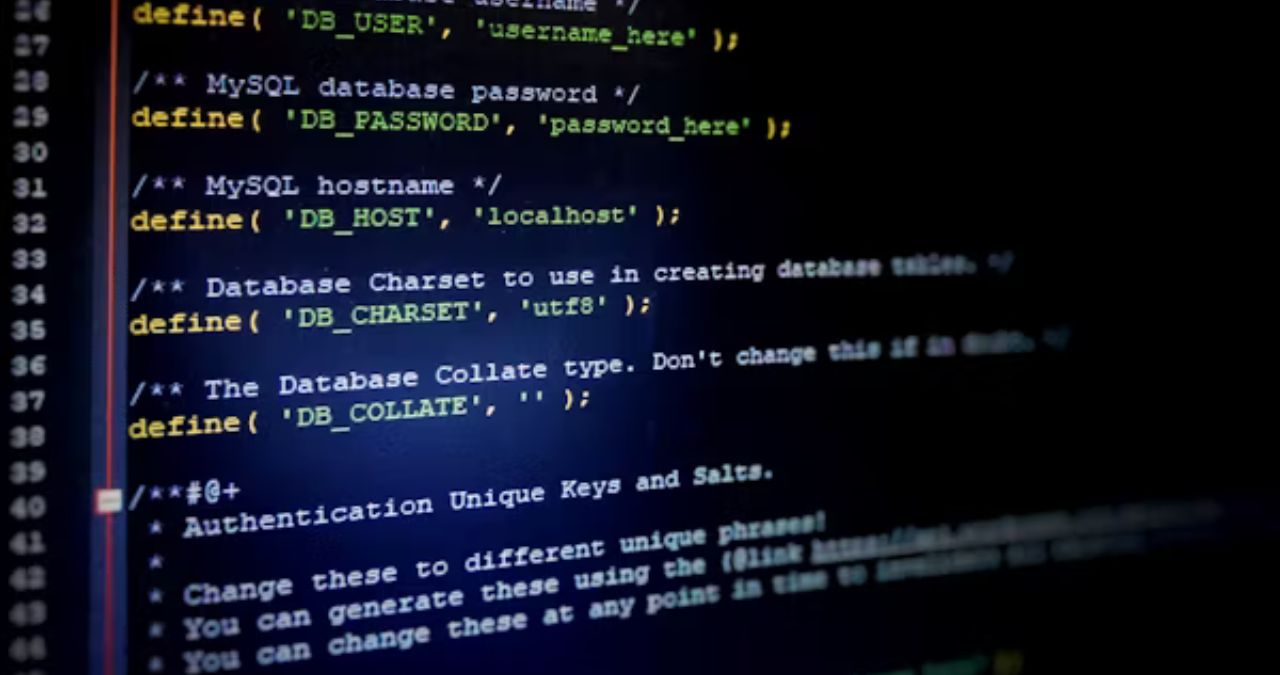BLOG
CHAS6D: Decoding a Next-Generation Digital Framework for Systems and Security

In today’s interconnected world, digital security has become one of the most pressing concerns for organizations, governments, and individuals alike. From safeguarding sensitive data to ensuring the resilience of mission-critical infrastructures, the frameworks that govern digital systems need to be robust, scalable, and forward-thinking. Enter CHAS6D—a next-generation digital framework designed to redefine the way we approach systems and security.
Unlike traditional models, CHAS6D isn’t just about compliance or patchwork fixes. Instead, it integrates holistic architecture, advanced security protocols, and adaptive strategies to tackle the complexities of digital ecosystems. This article explores the origins, components, applications, and long-term potential of CHAS6D as a transformative force in digital security.
What Is CHAS6D?
CHAS6D is an emerging digital framework that combines Cybersecurity, Hybrid Architecture, Adaptive Systems, and 6-Dimensional (6D) analysis to create a resilient and future-ready approach to systems design and protection.
At its core, CHAS6D recognizes that modern systems:
-
Are increasingly distributed and hybrid (on-premises, cloud, and edge computing).
-
Face constantly evolving cyber threats that traditional models struggle to predict.
-
Require continuous adaptation rather than static security postures.
-
Must integrate security with usability, rather than treating them as separate entities.
By addressing these realities, CHAS6D offers a multi-layered, multidimensional framework that aligns with the needs of modern digital enterprises.
Breaking Down the CHAS6D Framework
The acronym CHAS6D represents key principles that define the framework:
-
C – Cybersecurity at the Core
Security isn’t an afterthought; it is embedded into system design from the start. CHAS6D applies zero-trust models, AI-driven threat detection, and encryption-first architectures. -
H – Hybrid Systems Integration
Organizations today run hybrid ecosystems, blending legacy systems with cloud-native and edge solutions. CHAS6D ensures seamless interoperability across platforms while maintaining consistent governance. -
A – Adaptive Intelligence
Threats evolve daily. CHAS6D incorporates machine learning and adaptive intelligence, allowing systems to self-learn and recalibrate defenses in real time. -
S – Systems Resilience
Beyond prevention, CHAS6D emphasizes resilience—the ability to withstand, adapt, and recover from disruptions, whether cyberattacks or system failures. -
6D – Six-Dimensional Analysis
The framework evaluates systems across six key dimensions:-
Infrastructure Security (hardware, networks, endpoints)
-
Application Security (code, APIs, software lifecycle)
-
Data Security (storage, encryption, privacy compliance)
-
User Access & Identity (authentication, authorization, behavioral monitoring)
-
Operational Resilience (disaster recovery, failover systems)
-
Regulatory & Ethical Compliance (global data laws, ethical AI practices)
-
Together, these principles create a comprehensive security ecosystem designed for the digital age.
Why CHAS6D Matters Today
1. Escalating Cyber Threats
Cybercrime costs are projected to exceed $10 trillion annually by 2025, making traditional models insufficient. CHAS6D’s adaptive intelligence ensures systems aren’t static targets.
2. Complexity of Hybrid Environments
With most enterprises operating in hybrid cloud environments, interoperability without security lapses is critical. CHAS6D provides a blueprint for cohesive integration.
3. Regulatory Pressures
From GDPR to CCPA to emerging AI regulations, organizations must navigate a minefield of compliance obligations. CHAS6D’s 6D compliance layer provides proactive governance.
4. Digital Transformation Demands
Businesses undergoing digital transformation need security frameworks that are scalable, modular, and future-ready. CHAS6D aligns with this by being architecture-agnostic.
Key Applications of CHAS6D
The versatility of CHAS6D allows it to be applied across industries:
-
Finance: Protecting high-value transactions, fraud detection, and compliance in banking systems.
-
Healthcare: Securing sensitive patient data under HIPAA and EU healthcare regulations.
-
Government & Defense: Building resilient national infrastructures resistant to cyber warfare.
-
Telecommunications: Ensuring secure 5G and IoT networks at scale.
-
Smart Cities: Creating resilient frameworks for IoT-enabled urban ecosystems.
-
Enterprise IT: Offering a roadmap for organizations managing hybrid and multi-cloud systems.
Each application leverages the 6D approach, adapting to the specific vulnerabilities of its sector.
Advantages of CHAS6D Over Traditional Frameworks
-
Proactive vs. Reactive:
Instead of waiting for threats to emerge, CHAS6D uses predictive analytics and AI-driven defenses. -
Holistic View:
Traditional frameworks often focus narrowly (e.g., on infrastructure or compliance). CHAS6D covers all six dimensions simultaneously. -
Flexibility & Adaptation:
Designed for hybrid, decentralized systems, it evolves as technology evolves. -
Resilience-Centric:
Downtime and breaches are inevitable—but CHAS6D’s emphasis on rapid recovery minimizes long-term damage. -
Future-Proofing:
By embedding adaptive intelligence and compliance monitoring, it anticipates future security and regulatory landscapes.
Challenges and Considerations
While promising, CHAS6D is not without challenges:
-
Implementation Complexity: Deploying a 6D model requires significant expertise and resources.
-
Costs: Advanced AI-driven systems may be costly for smaller enterprises.
-
Skills Gap: Organizations must upskill IT staff to understand and manage CHAS6D environments.
-
Standardization: As a newer framework, CHAS6D may face adoption hurdles without widespread industry standards.
However, as with most transformative technologies, early adopters often reap the most benefits in the long run.
CHAS6D and the Future of Digital Security
Looking ahead, CHAS6D could play a pivotal role in shaping next-generation cybersecurity. Possible future developments include:
-
AI-Orchestrated Security: Entirely automated threat response using self-learning defense systems.
-
Quantum-Ready Cryptography: Preparing for a world where quantum computing challenges existing encryption methods.
-
Global Security Standards:CHAS6D could inspire new international frameworks for digital governance.
-
Integration with Blockchain: Ensuring tamper-proof data integrity within decentralized systems.
-
Security-as-a-Service Models: Offering CHAS6D as a cloud-based managed service for enterprises.
These potential pathways highlight the scalability and adaptability of the framework as technology continues to advance.
Conclusion
In an era where digital systems are both a necessity and a vulnerability, CHAS6D represents a paradigm shift in how we think about security and system design. By integrating cybersecurity, hybrid architecture, adaptive intelligence, and six-dimensional analysis, it delivers a holistic, future-ready framework that moves beyond the limitations of traditional approaches.
BLOG
Mastering Speciering: Tips for Businesses Looking to Stand Out

In today’s crowded marketplace, simply offering a good product or service isn’t enough to capture attention. Businesses must differentiate themselves in meaningful ways. This is where speciering comes into play—a concept that encourages brands to carve out their own niche and stand apart from the competition. But what does it really mean, and why should you care? If you’re eager to elevate your business strategy and resonate with your audience on a deeper level, mastering speciering could be the game-changer you’ve been looking for. Buckle up as we explore actionable insights that can help you harness this powerful approach!
What is Speciering and Why Is It Important?
Speciering is a strategic approach that focuses on differentiating your brand in a saturated market. It’s about creating a distinct identity that speaks to specific customer needs, preferences, and values.
Why is this important? In an era where consumers are bombarded with choices, standing out is crucial. Speciering allows businesses to highlight what makes them unique and relevant.
By honing in on particular attributes or niche markets, companies can cultivate loyalty among their target audience. This fosters not just customer acquisition but also retention.
Moreover, speciering encourages innovation. When you focus on what sets you apart, it pushes you to develop new ideas and solutions tailored specifically for your customers’ pain points. This proactive approach can lead to greater satisfaction and ultimately drive sales growth over time.
Understanding Your Target Market
Understanding your target market is crucial for effective speciering. It’s not merely about demographics. You need to dig deeper into psychographics, behaviors, and motivations.
Start by creating customer personas that embody your ideal buyers. What do they value? What challenges do they face? Gaining insight into their preferences can help shape your offerings.
Utilize surveys and interviews to gather firsthand information. Social media analytics also provide valuable data on engagement patterns and interests.
Don’t overlook the importance of feedback from existing customers. Their experiences can reveal what resonates with them and what doesn’t.
This knowledge allows businesses to tailor products or services uniquely suited to their audience’s needs. By understanding who you’re communicating with, you can create messaging that speaks directly to them, enhancing connection and loyalty over time.
Researching Competitors and Identifying Gaps
To master speciering, understanding your competitors is crucial. Dive deep into their offerings, marketing strategies, and customer interactions. What do they excel at? Where are the weaknesses?
Analyze their product features and pricing models. Take note of customer feedback to uncover pain points that often go unnoticed. This insight can reveal gaps in the market ripe for innovation.
Look beyond direct competitors too. Explore adjacent industries where similar needs exist but aren’t being fully met.
Mapping out this landscape gives you a clearer picture of where your business can fit in uniquely.
Utilize tools like SWOT analysis to visualize competitive advantages or shortcomings clearly. By identifying these gaps, you position yourself strategically in a way that resonates with potential customers seeking something different from what’s currently available.
Crafting a Unique Value Proposition
Crafting a unique value proposition (UVP) is essential for any business aiming to thrive in today’s competitive landscape. Your UVP should clearly articulate what makes your product or service different and valuable to your target audience.
Start by identifying the core benefits of your offering. What problems does it solve? How does it enhance the customer’s life? Focus on these aspects to define your message.
Next, consider language that resonates with your audience. Use simple, compelling words that evoke emotion and create connection. This helps potential customers understand why they should choose you over competitors.
Additionally, ensure that your UVP stands out visually as well as textually. Incorporate engaging graphics or branding elements alongside the messaging to capture attention quickly.
Remember, a strong UVP isn’t static; it’s an evolving statement reflecting market changes and consumer preferences. Regularly assess its effectiveness and be ready to adapt when necessary.
Implementing Speciering Strategies in Marketing and Branding
Implementing speciering strategies in marketing and branding requires a fresh perspective. Businesses must identify what makes them distinct. This differentiation is essential to capture consumer interest.
Start by aligning your messaging with the unique value you offer. Use storytelling to communicate your brand’s journey, values, and mission effectively. A compelling narrative can connect emotionally with your audience.
Consider visual elements too. Design logos, packaging, and advertisements that reflect your brand’s uniqueness. Consistency across platforms builds recognition and trust.
Engage directly with customers through tailored campaigns that resonate with their needs and preferences. Utilize social media for interactive initiatives that showcase what sets you apart from competitors.
Gather feedback continuously to refine your approach. An open dialogue fosters loyalty while allowing you to adapt as market dynamics shift.
Case Studies of Successful Speciering in Business
One standout example of successful speciering is Apple. By focusing on sleek design and a seamless user experience, they differentiated themselves from competitors in the crowded tech market. Their premium pricing strategy further reinforces their unique position.
Another case is Tesla. The company carved a niche by promoting electric vehicles as not just eco-friendly but also high-performance machines. This approach has attracted a dedicated following willing to pay a premium for innovation.
Warby Parker transformed eyewear shopping with its home try-on program and commitment to social responsibility. They filled gaps left by traditional retailers, creating an engaging customer experience that emphasizes both style and affordability.
Nike’s “Just Do It” campaign illustrates how strong branding can elevate speciering efforts. By aligning their brand with athleticism and empowerment, they resonate deeply with consumers who aspire to achieve greatness through sport.
The Future of Speciering and Its Impact on the Market
The future of speciering is set to reshape industries across the board. As businesses increasingly recognize the value of differentiation, we can expect innovative strategies to emerge.
Technological advancements will play a significant role in this evolution. AI and data analytics will enable companies to understand their audiences on a deeper level, unearthing insights that drive unique offerings.
Sustainability also looms large in the speciering landscape. Brands prioritizing eco-friendly practices are likely to resonate more with consumers who demand responsible choices.
Moreover, personalization will become paramount. Tailoring products and services to individual preferences creates memorable experiences that stand out amidst competition.
As these trends unfold, adaptability will be critical for businesses seeking success through effective speciering initiatives. Companies must stay ahead of market shifts and consumer expectations or risk being left behind in an ever-changing marketplace.
Conclusion: Embracing Speciering to Set Your Business Apart
Embracing speciering can transform your business landscape. It’s about carving out a unique space in the market where your brand thrives. By understanding what sets you apart, you create not just products or services but experiences that resonate with consumers.
The journey begins with knowing your audience—who they are and what drives their decisions. When businesses take the time to research competitors and identify gaps, they uncover opportunities for innovation. Crafting a compelling value proposition becomes essential; it’s how you communicate your distinctiveness.
Implementing these strategies through effective marketing and branding solidifies your position in the market. Successful case studies highlight that those who embrace speciering often see increased customer loyalty and higher engagement levels.
As we look towards the future, speciering holds immense potential for brands willing to take risks and innovate continuously. Businesses that adapt will not only survive but thrive amid competition.
Setting yourself apart requires dedication, creativity, and an unwavering commitment to delivering value uniquely tailored to meet consumer needs. Embrace this concept fully, and watch as your business flourishes on its own terms.
BLOG
Exploring 13377x: The Ultimate Guide to Safe Torrenting

Torrenting has become a popular way to share and download files, from movies and music to software and games. Among the myriad of torrent sites available today, 13377x stands out as a prominent player in this digital landscape. It offers users access to an extensive library of content while promising a user-friendly experience.
But what exactly is torrenting? And why should you consider using 13377x for your downloading needs? As with any online activity involving file sharing, there are certain risks involved. Understanding those risks is crucial for safe browsing.
In this guide, we’ll explore everything you need to know about 13377x: its benefits, how to navigate it safely, the popular content it hosts, and even some alternatives if you’re looking for something different. Whether you’re a seasoned torrent user or just getting started, you’ll find valuable insights that will enhance your experience. Let’s dive into the world of torrenting!
What is Torrenting?
Torrenting is a method of distributing files over the internet using peer-to-peer (P2P) technology. Instead of downloading a file from a single server, users share small pieces of that file directly with each other. This decentralized approach speeds up the process and reduces strain on any one source.
When you download a torrent, you’re essentially grabbing bits and pieces from multiple sources simultaneously. Each user acts as both an uploader and downloader, making it efficient for sharing large files like movies or software.
To facilitate this process, torrent files contain metadata about the content being shared but do not include the actual data itself. Users need a BitTorrent client to open these files, which connects them to others in the network for seamless downloads.
This system has revolutionized how we access media online, creating an extensive library available at our fingertips. However, it’s essential to navigate this world cautiously due to potential risks involved.
The Risks of Torrenting
Torrenting poses significant risks that every user should be aware of. One major concern is the legality of downloading copyrighted content. Engaging in such activities can lead to hefty fines or legal action from copyright holders.
Another risk involves malware and viruses lurking within torrent files. Downloading an infected file can compromise your device, leading to data loss or identity theft. Always exercise caution when selecting torrents.
Additionally, using public Wi-Fi networks while torrenting exposes you to potential snoopers and hackers. They could easily intercept your connection, putting your personal information at risk.
Without proper safeguards like a VPN, your IP address remains visible to others sharing the same network. This transparency could lead to unwanted attention from internet service providers or even authorities tracking illegal downloads.
Benefits of Using 13377x
13377x stands out as one of the most popular torrent sites, attracting users for several reasons. Its vast library includes movies, TV shows, games, and software. You can find just about anything you’re looking for.
The user-friendly interface makes navigation a breeze. With clear categories and search options, locating your desired content takes mere seconds. This efficiency enhances the overall experience.
Another significant advantage is the active community behind 13377x. Users frequently upload fresh torrents and share valuable feedback on quality and safety. This interaction fosters trust among members.
Additionally, 13377x often provides verified torrents marked with green checkmarks. These indicators help users identify safe files while minimizing risks associated with downloading potentially harmful content.
For those who enjoy niche genres or lesser-known titles, 13377x offers an impressive selection that’s hard to beat elsewhere. The platform caters to diverse tastes without compromising accessibility or quality.
How to Access 13377x Safely
Accessing 13377x safely is essential for a worry-free torrenting experience. Start by using a reliable VPN. This masks your IP address and encrypts your internet connection, keeping your online activities private.
Next, ensure you have updated antivirus software running on your device. This adds another layer of protection against potential threats while browsing or downloading files.
Before accessing the site, clear your browser’s cache and cookies. This reduces tracker visibility and enhances privacy.
When navigating 13377x, stick to well-seeded torrents with positive user comments. This not only boosts download speeds but also minimizes risks associated with malicious files.
Be cautious about what you download. Avoid executable files (.exe) as they can harbor malware. Prioritize common formats like .mp4 or .mkv for safe video content that users frequently share.
Popular Content Available on 13377x
13377x is a treasure trove for torrent enthusiasts. Its extensive library caters to diverse interests, making it a popular choice among users.
Movies are one of the standout categories. From the latest blockbusters to classic films, there’s something for everyone. Users can easily find high-definition content or rare titles that aren’t readily available elsewhere.
TV shows also shine on this platform. With entire seasons and episodes of popular series often uploaded shortly after airing, binge-watchers will feel right at home.
Gaming torrents add another layer of excitement. Whether you’re hunting for the newest releases or nostalgic favorites, 13377x has you covered with a variety of gaming content.
Music lovers won’t be disappointed either; albums from various genres are plentiful here. From chart-toppers to underground hits, users can explore new sounds effortlessly while adding them to their collections.
Alternatives to 13377x
If you’re looking for alternatives to 13377x, there are several noteworthy options. Each platform offers a unique set of features and content.
The Pirate Bay remains a classic choice. It boasts an extensive library and has stood the test of time. Users appreciate its straightforward interface and vibrant community.
RARBG is another great option, known for its quality torrents. This site emphasizes user feedback, ensuring that downloads are safe and reliable.
For those seeking niche content, TorrentGalaxy might be ideal. It focuses on specific genres while maintaining an active user base that regularly updates listings.
Don’t overlook LimeTorrents either; it serves as a solid alternative with a wide range of media types available for download.
Exploring these alternatives can enhance your torrenting experience while keeping things fresh. Each site brings something unique to the table.
Conclusion
Torrenting has become a popular way to share and download files, but it’s essential to navigate this landscape with caution. With risks such as malware, legal issues, and privacy concerns looming large, understanding how to torrent safely is crucial.
13377x stands out as one of the most visited torrent sites due to its vast library of content and user-friendly interface. By utilizing VPNs and adhering to safety protocols, users can access 13377x without compromising their security.
The platform boasts an extensive collection ranging from movies and TV shows to games and software applications. This variety makes it appealing for those seeking diverse entertainment options.
While 13377x is a great resource, exploring alternatives like The Pirate Bay or RARBG can provide additional choices tailored to specific needs.
As you explore the world of torrenting through platforms like 13377x, remember that knowledge is power. Stay informed about your digital footprint while enjoying the benefits of fast downloads and unlimited content access in a safe manner. Happy torrenting!
BLOG
The Rise of OGFAP: A Comprehensive Overview for Newbies

Welcome to the fascinating world of OGFAP! If you’ve stumbled upon this term and are wondering what it’s all about, you’re not alone. OGFAP is making waves across various platforms, creating a buzz that has intrigued many newcomers. Whether you’re looking to enhance your skills or simply explore a new interest, understanding OGFAP can open up exciting opportunities for you.
This blog post will take you through everything you need to know about OGFAP—from its origins and benefits to how you can get started today. So grab a cup of coffee, settle in, and let’s dive into the rise of OGFAP together!
What is OGFAP?
OGFAP stands for Online Group Focused Activity Participation. It’s a platform that encourages collaboration and engagement among users with shared interests.
At its core, OGFAP fosters an interactive environment where participants can connect over various activities. These might include workshops, discussions, or even creative projects.
The essence of OGFAP lies in community building. Users come together to exchange ideas and support one another in their pursuits. It’s not just about individual growth but collective progress as well.
This innovative approach has attracted hobbyists, professionals, and learners alike. The versatility of OGFAP allows it to cater to diverse interests ranging from art and technology to wellness and education.
With the rise of digital interaction, OGFAP is gaining traction as a go-to method for meaningful online connections.
The History and Evolution of OGFAP
OGFAP began as a grassroots movement driven by enthusiasts who sought to create a platform for collaboration. It started small, with only a handful of participants sharing their ideas and experiences.
As interest grew, so did the community. Workshops and events emerged, fostering connections among members. The evolution continued as technology advanced, allowing for online participation and global reach.
In its early days, OGFAP was focused on local initiatives. Over time, it embraced diverse topics and skills. This shift attracted various demographics eager to contribute.
The introduction of social media played a pivotal role in its expansion. Participants could share content widely, attracting new faces and insights into the mix.
Today’s OGFAP reflects years of growth; it thrives on inclusivity and innovation while maintaining its core values established in those formative years.
Benefits of Participating in OGFAP
Participating in OGFAP opens up a world of opportunities. One significant benefit is the chance to connect with like-minded individuals. Engaging with a community that shares your interests fosters collaboration and inspiration.
Another advantage lies in skill development. Whether you are honing existing talents or picking up new ones, OGFAP encourages personal growth. This environment nurtures creativity and innovation.
Moreover, being part of this initiative can enhance your portfolio or resume. Demonstrating active participation showcases dedication and enthusiasm, qualities valued by employers.
Networking opportunities abound as well. You can meet industry professionals who may offer guidance or even job leads down the line.
Participants often enjoy exclusive access to resources that enrich their experience further. These tools empower members to maximize their potential within the program’s framework.
How to Get Started with OGFAP
Getting started with OGFAP is easier than you might think. First, familiarize yourself with the platform’s features and guidelines. This step will set a solid foundation for your journey.
Create an account by providing basic information. Make sure to choose a username that reflects your personality or interests. A unique identity helps in building connections within the community.
Explore various groups and forums related to OGFAP. Engaging with others can provide insights and enhance your experience. Don’t hesitate to ask questions; the community is generally welcoming and helpful.
Start participating actively by sharing content or contributing to discussions. Your input can spark conversations, making it an enriching experience for everyone involved.
Set achievable goals for what you want to accomplish on OGFAP. Whether it’s networking, learning new skills, or simply having fun, clarity helps maintain focus as you navigate this vibrant environment.
Tips for Success in OGFAP
To excel in OGFAP, start by setting clear goals. Knowing what you want to achieve helps maintain focus and motivation.
Engagement is key. Connect with others in the community; share experiences and insights. This fosters collaboration and opens up new opportunities.
Stay organized. Use tools like planners or digital apps to track your progress and deadlines efficiently. Staying on top of tasks boosts productivity.
Don’t hesitate to ask for help when needed. Whether it’s guidance from mentors or support from peers, seeking assistance can lead to valuable learning experiences.
Continuously refine your skills. Embrace learning through workshops or online courses related to OGFAP topics that pique your interest. Adaptability will keep you ahead of the curve as trends evolve within the realm of OGFAP.
Common Misconceptions about OGFAP
Many newcomers to OGFAP often carry misconceptions that can hinder their experience. One prevalent myth is that OGFAP is only for tech-savvy individuals. In reality, anyone with basic internet skills can participate and enjoy the benefits.
Another misunderstanding revolves around the notion that OGFAP demands a significant time commitment. While active engagement helps, even sporadic involvement can yield positive outcomes.
Some people believe that success in OGFAP requires substantial financial investment or resources. The truth is, many participants find ways to thrive without breaking the bank.
Additionally, there’s a common fear regarding exclusivity within the community. However, OGFAP prides itself on being inclusive and welcoming to all members regardless of their background or expertise level.
Some think it’s just another passing trend; however, its growing popularity suggests otherwise—a sign of lasting relevance in today’s digital landscape.
The Future of OGFAP: Predictions and Trends
The landscape of OGFAP is evolving rapidly. As more individuals and organizations recognize its potential, we can expect an influx of innovative tools and platforms designed to enhance participation.
Emerging technologies like artificial intelligence and blockchain are likely to play a crucial role. These advancements could streamline processes, ensuring transparency and security within the OGFAP community.
Moreover, the focus on inclusivity will drive expansion into diverse demographics. This trend may foster collaboration among various groups, leading to richer interactions and shared knowledge.
We might also see a shift towards sustainability in practices related to OGFAP activities. Environmental awareness is growing, prompting participants to adopt eco-friendly methods.
As social media continues shaping how communities connect, engagement through these channels will become even more vital for OGFAP’s growth trajectory. The future appears vibrant with endless possibilities awaiting exploration.
Conclusion
The rise of OGFAP has undoubtedly transformed the landscape for enthusiasts and newcomers alike. With its rich history, evolving practices, and myriad benefits, it offers an exciting opportunity to engage with a like-minded community. As you embark on your journey into OGFAP, remember that success requires dedication and openness to learning.
Navigating common misconceptions will help you appreciate the true essence of this engaging phenomenon. The future looks promising as trends continue to emerge, making participation even more accessible and enjoyable.
Embrace the possibilities that OGFAP presents. Whether you’re just starting or looking to deepen your involvement, there’s always something new waiting around the corner. Explore confidently and make connections that inspire growth in both yourself and others within the community.
-

 TECH4 months ago
TECH4 months ago185.63.263.20: Insights into This Unusual IPv4 Address
-

 BLOG4 months ago
BLOG4 months agoKorpenpelloz: An In-Depth Exploration of Its Significance
-

 BLOG4 months ago
BLOG4 months agoXaller: A Comprehensive Guide to Understanding Its Significance and Applications
-

 BLOG4 months ago
BLOG4 months agoRosy Kellogg: Uncovering the Life and Legacy of a Renowned Figure
-

 BLOG4 months ago
BLOG4 months agoCarmenton.xyz: Everything You Need To Know
-

 BLOG3 weeks ago
BLOG3 weeks agoPyjamaspapper: The Pajama-Clad Dad Who’s Always There
-

 HOME4 months ago
HOME4 months agoTEK-102: A Comprehensive Guide to Its Features, Uses, and Industry Impact
-

 BLOG4 months ago
BLOG4 months agoVidude: A Comprehensive Exploration of a Multifaceted Concept
